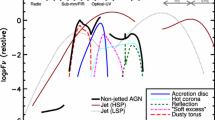Abstract
We have monitored S Ori 45, a young, low-mass (20 M j up) brown dwarf of the σ Orionis cluster (∼3 Myr, 352 pc), using optical and near-infrared filters. S Ori 45 (spectral type M8.5) is found to be multi-periodic with a dominant modulation at 2.5–3.5 h, and a short modulation at about 46 min. We ascribe the longer of these modulations to a rotation period. After comparing these results with observations of more massive cluster brown dwarfs and field brown dwarfs, we conclude that substellar objects present rotational and angular momentum evolution.
We have also obtained intermediate-resolution near-infrared spectroscopy of S Ori 70, which is a T-class, free-floating planetary candidate member in the σ Orionis cluster. Its observed spectrum has been compared to data of field brown dwarfs of similar types and to theoretical spectra computed for different surface temperatures and gravities. We conclude that S Ori 70 has a significantly cool, low-gravity atmosphere. This supports the young age of this object and its membership in the cluster. From state-of-the-art evolutionary models, the mass of S Ori 70 is estimated at 3 times the Jovian mass (+5 −2 M j up), challenging current stellar/substellar formation models. S Ori 70 remains the lowest mass object so far identified in any open cluster.
Similar content being viewed by others
References
Allard, F. et al.: 2001, ApJ 556, 357.
Bailer-Jones, C.A.L. and Mundt, R.: 1999, A&A 348, 800.
Bailer-Jones, C.A.L. and Mundt, R.: 2001, A&A 367, 218.
Barrado y Navascués, D. et al.: 2003, A&A 404, 171.
Béjar, V.J.S. et al.: 1999, ApJ 521, 671.
Béjar, V.J.S. et al.: 2001, ApJ 556, 830.
Burgasser, A. et al.: 2002, ApJ 564, 421.
Burrows, A. et al.: 1997, ApJ 491, 856.
Chabrier, G. et al.: 2000, ApJ 542, 464.
Clarke, F.J., Oppenheimer, B. and Tinney, C.: 2002, MNRAS 332, 361.
Deeg, H.J. et al.: 1998, A&A 338, 479.
Herbst, W. et al.: 2000, AJ 119, 261.
Joergens, V. et al.: 2003, ApJ 594, 971.
Lomb, N.R.: 1976, Ap&SS 39, 447.
Lucas, P. et al.: 2001, MNRAS 326, 695.
Martín, E.L. and Zapatero Osorio, M.R.: 2003, ApJ 593, L113.
Oliveira, J.M. et al.: 2002, A&A 382, L22.
Partridge, P. and Schwenke.: 1997, J. Chem. Phys. 106, 4618.
Saumon, D. et al.: 1996, ApJ 460, 993.
Roberts, D.H., Lehár, J. and Dreher, J.W.: 1987, AJ 93, 968.
Saumon, D. et al.: 1996, ApJ 460, 993.
Scargle, J.D.: 1982, ApJ 263, 835.
Zapatero Osorio, M.R. et al.: 2000, Science 290, 103.
Zapatero Osorio, M.R. et al.: 2002a, ApJ 578, 536.
Zapatero Osorio, M.R. et al.: 2002b, A&A 384, 937.
Zapatero Osorio, M.R. et al.: 2003, A&A 408, 663.
Author information
Authors and Affiliations
Rights and permissions
About this article
Cite this article
Osorio, M.R.Z., Caballero, J., Martín, E.L. et al. Clues to Substellar Formation: Rotation and the Low-Mass End of the Initial Mass Function. Astrophysics and Space Science 292, 673–679 (2004). https://doi.org/10.1023/B:ASTR.0000045074.68528.fc
Issue Date:
DOI: https://doi.org/10.1023/B:ASTR.0000045074.68528.fc




